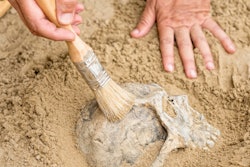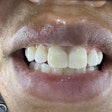A dental surgeon had a flash of insight while viewing the Shroud of Turin, which many believe to be the burial linen that was used to wrap the body of Jesus after the crucifixion, deepening the mystery surrounding the garment, according to news stories.
While viewing the Shroud of Turin, a linen that bears a faint imprint of a crucified man, including wounds and blood stains, during a rare public exhibition, Dr. John Sottosanti noticed the visible outline of the lower front teeth.
Sottosanti claims the visibility of the lower teeth on the garment suggests the body released a burst of radiant energy at the peak of Jesus’ resurrection. This energy would have enough power to leave the mark of the smallest anatomical features on the garment, according to the stories.
The Shroud of Turin is a 14-foot linen cloth showing the image of a five-foot, six-inch-tall man with sunken eyes, a mustache, and beard, with wounds matching those of an individual who was crucified or affixed to a wooden cross with nails at the wrists and ankles.
“The implications are staggering,” Sottosanti wrote in an article for The Blaze. “For believers, the Shroud may be the closest thing we have to photographic evidence of the resurrection -- the foundational event of Christianity. For skeptics, it remains an enigma, a puzzle that modern science cannot fully explain. Either way, it demands attention.”
But not all experts agree with Sottosanti.
Dr. Kelly Kearse, an immunologist who has studied the Shroud of Turin, said in the Daily Mail, “The issue of visible teeth on the Shroud is a subjective one and has been around for several years. In my opinion, for what it's worth, I believe it is difficult to tell because of the banding of the cloth, which appears white in the negative image.”
The origin of the shroud dates back to the 1350s, when a knight, Geoffroi de Charny, in Lirey, France, presented the relic to the dean of the Catholic church. It’s not known how de Charny obtained the shroud or where it was before the 1350s.
The shroud has been the subject of numerous academic papers, with a 1988 analysis showing the shroud dated back to 1260 and 1390. Other analyses have reported flaws with the 1988 analysis, reporting that the entire shroud was not analyzed, only certain pieces of its edges.



















